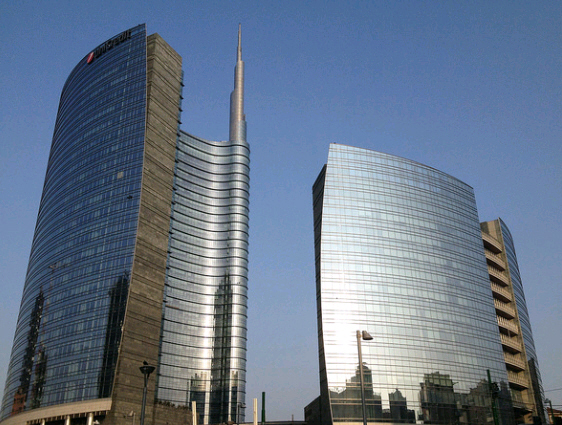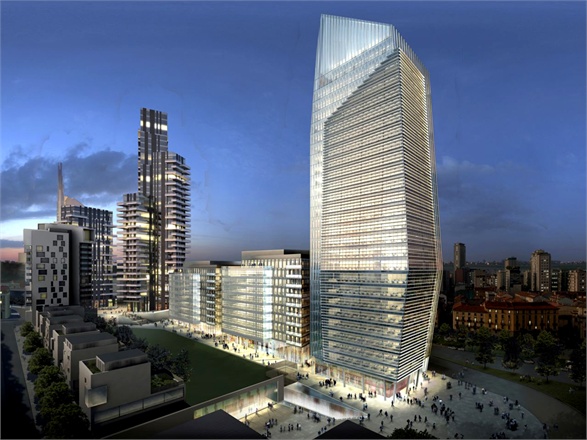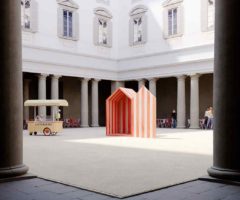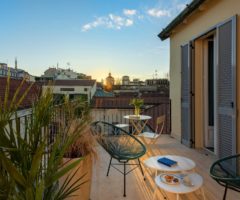Dopo anni di stagnazione urbanistica, Milano si è risvegliata dal lungo sonno, proponendo una decisiva svolta verso la contemporaneità. Numerose le aree industriali dismesse, all’interno della città, che necessitavano di una riconnessione urbana. Due le più importanti; un’area compresa tra la Stazione Garibaldi e la Stazione Centrale e l’area dell’ex fiera. Nel 2004 due progetti vincono gare e diffidenze; City Life si occuperà della zona ex fiera, mentre il gruppo Porta Nuova dedica le sue energie all’area Garibaldi Centrale. Grandi ostacoli sono intervenuti negli anni a provocare ritardi ed inconvenienti, tuttavia, oggi, guardare la città significa osservare uno skyline tutto nuovo ed entusiasmante, dove la verticalità ha preso il sopravvento senza prevaricare il sapore storico dei siti. Conosciamo insieme alcuni di questi nuovi ospiti.
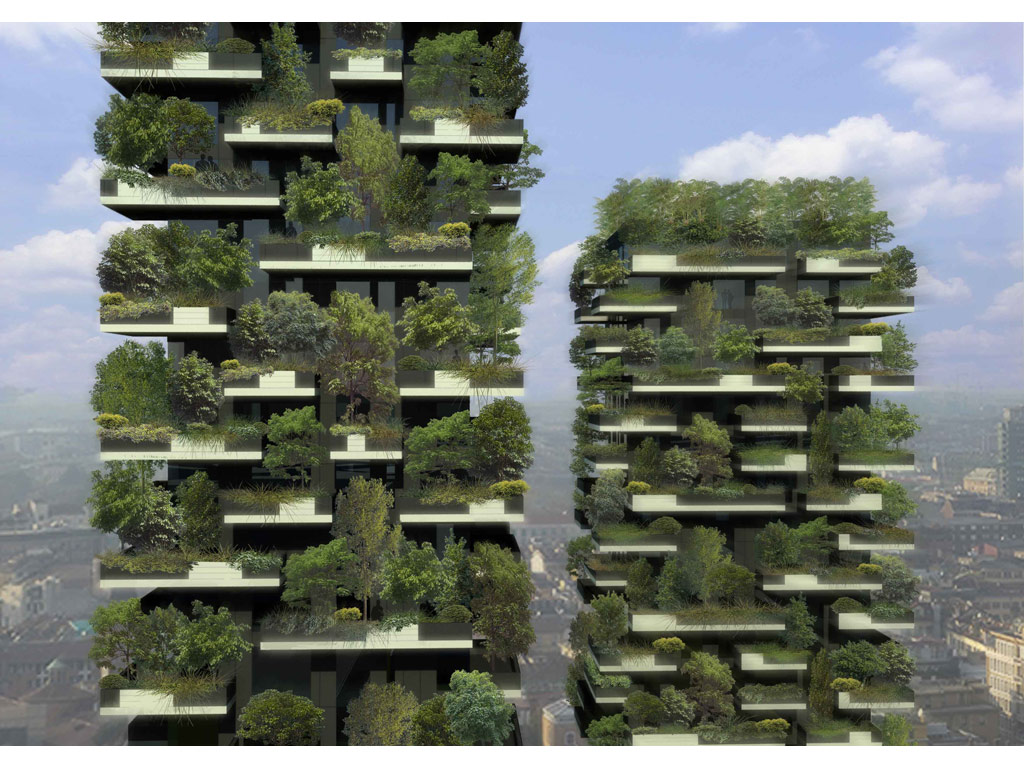 After years of urbanistic stagnation, Milan has finally awakened from a long sleep, taking a decisive turn towards modernity. There are many industrial areas within the city requiring an urban reconnection. Two of the most important are an area between Garibaldi Station and Central Station and the site of the former exhibition or Fiera. In 2004, two projects win both tenders and mistrust; City Life will take care of the former exhibition area, while the Porta Nuova group devotes its energies to the Garibaldi Centrale. Great obstacles posed challenges in the course of the years, causing delays and inconveniences, however, today, if you look at the city skyline you can see something new and exciting, where verticality has taken over without overpowering the taste of the many historical sites. Let’s get to know some better.
After years of urbanistic stagnation, Milan has finally awakened from a long sleep, taking a decisive turn towards modernity. There are many industrial areas within the city requiring an urban reconnection. Two of the most important are an area between Garibaldi Station and Central Station and the site of the former exhibition or Fiera. In 2004, two projects win both tenders and mistrust; City Life will take care of the former exhibition area, while the Porta Nuova group devotes its energies to the Garibaldi Centrale. Great obstacles posed challenges in the course of the years, causing delays and inconveniences, however, today, if you look at the city skyline you can see something new and exciting, where verticality has taken over without overpowering the taste of the many historical sites. Let’s get to know some better.
Forse la più conosciuta, ma certamente la più alta (231 m), è la Torre Unicredit, anche chiamata Torre Cesar Pelli, dal nome dell’architetto argentino di origine italiana che l’ha progettata. E’ un edificio sinuoso, che termina con una guglia attorcigliata, palese citazione delle guglie del Duomo. Da ogni prospettiva il grattacielo si mostra elegante, con la sua facciata completamente in vetro a nord e quella a sud leggermente variegata dai frangisole. Bisogna infatti apprezzare l’ecosostenibilità perseguita nel progetto, e che è stato uno dei temi dominanti di tutti i concorsi. A completare l’insediamento, che accoglie la bellissima Piazza Gae Aulenti, ecco altri due edifici, chiamati torre A e torre B che, visti da Corso Como, rappresentano una sorta di Portale di ingresso all’area.
Perhaps the best known, and certainly the tallest (231 m), is the Unicredit Tower, also called Cesar Pelli Tower after the Argentinian architect of Italian origin who designed it. It a winding building, which ends with a twisted spire, a clear nod to the spires of the Duomo. From every perspective, the skyscraper is elegant, with its all-glass facade to the north and the south varied slightly by shading. We must mention the sustainability pursued throughout the project, which was one of the dominant themes in all tenders. To complete the installation, which includes the beautiful Piazza Gae Aulenti, there are another two buildings, called Tower A and Tower B which, seen from Corso Como, representing a sort of entrance portal to the area.
La Torre Diamante (detta anche Diamantone o Diamond Tower) è stata progettata dallo studio Kohn Pedersen Fox Associates, ed è chiamata così per la sua forma sfaccettata che ricorda appunto quella di un diamante. Affacciata su Via Galilei è l’edificio in acciaio più alto d’Italia (140 m) ed è affiancato da due edifici più piccoli detti Diamantini.
The Diamond Tower (also called Diamantone) was designed by the Kohn Pedersen Fox Associates firm, and is so named because of its faceted shape, which instantly reminds us of a diamond. Overlooking Via Galilei is the highest steel building in Italy (140 m), flanked by two smaller buildings known as Diamantini.
La Torre Solaria, il più alto edificio residenziale di Milano e d’Italia (143 m), progettata dallo Studio Arquitectonica di Miami, lo studio Dolce Vita Homes, insieme ai partner Antonio Citterio, Patricia Viel and Partners. E’ un edificio progettato per vivere secondo alti standard di qualità della vita, offrendo un sapiente mix di privacy e relazione con l’intorno. Numerosi sono i servizi comuni offerti ai residenti. Si affianca ad altri due edifici residenziali, e precisamente la Torre Aria e la Torre Solea.
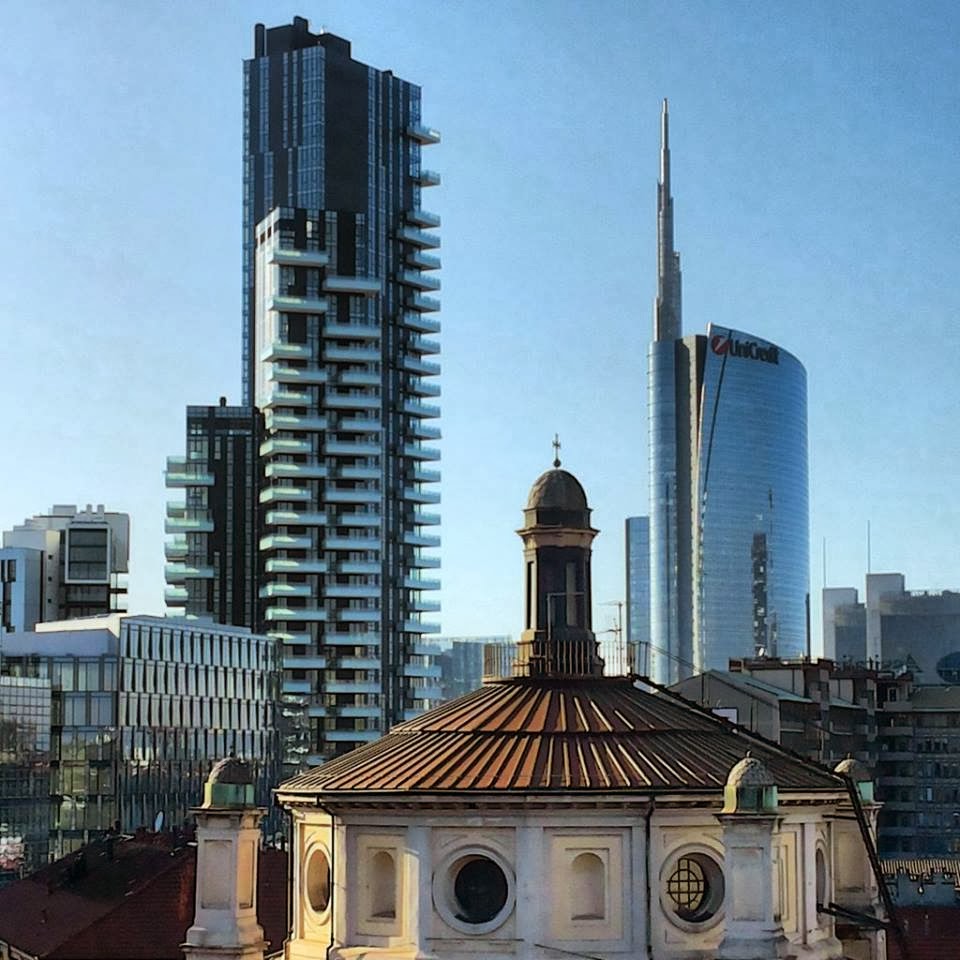
The Solaria Tower, is the tallest residential building in Milan and Italy (143 m), and was designed by Studio Arquitectonica of Miami, the studio Dolce Vita Homes, together with partners Antonio Citterio, Patricia Viel and Partners. It’s a building designed for high standard of quality of life, offering a clever mix of privacy and relationship with the surroundings. There are many common services offered to residents. It joins two other residential buildings, called the Air Tower and the Tower Solea.

